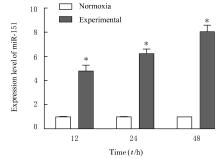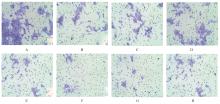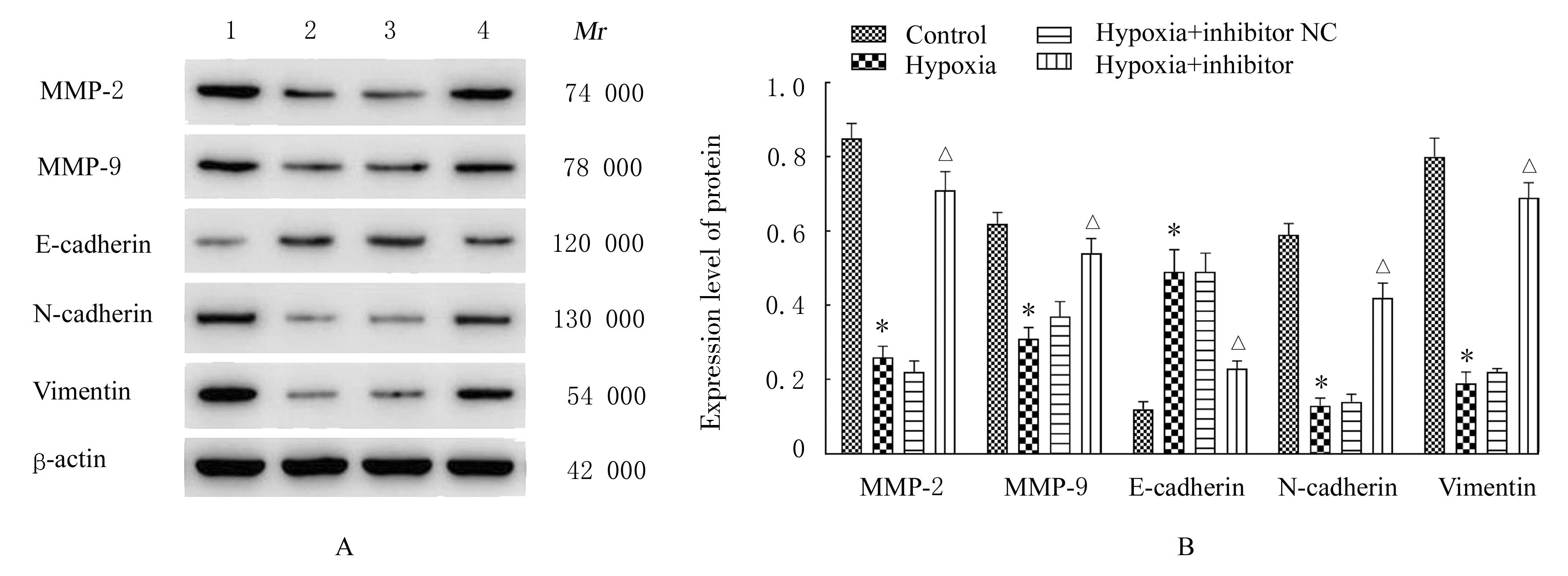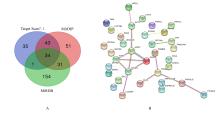吉林大学学报(医学版) ›› 2024, Vol. 50 ›› Issue (2): 515-522.doi: 10.13481/j.1671-587X.20240226
• 临床研究 • 上一篇
抑制miR-151表达对低氧条件下人绒毛膜滋养层细胞生物学行为的影响
- 南华大学衡阳医学院附属第一医院产科,湖南 衡阳 421001
Effect of inhibition of miR-151 expression on biological behavior of human chorionic trophoblast cells under hypoxia condition
Lili ZHONG,Chunfen YANG( ),Ying SHENG
),Ying SHENG
- Department of Obstetrics,First Affiliated Hospital,Hengyang Medical School,University of South China,Hengyang 421001,China
摘要:
目的 探讨微小RNA-151(miR-151)对低氧条件下人绒毛膜滋养层细胞HTR-8/SVneo生物学行为的影响,并阐明其可能的作用机制。 方法 选择47例子痫前期产妇(子痫前期组)和36例正常产妇(正常组)作为研究对象,采用实时荧光定量PCR(RT-qPCR)法检测2组产妇胎盘组织中miR-151表达水平。将miR-151 inhibitor及其阴性对照inhibitor NC转染至HTR-8/SVneo细胞中,进行低氧(1% O2)干预48 h,设立对照组、低氧组、低氧+inhibitor NC组和低氧+inhibitor组。采用RT-qPCR法检测各组细胞中miR-151表达水平,MTT法检测各组细胞存活率,Transwell小室实验检测各组迁移细胞数和侵袭细胞数,Western blotting法检测各组细胞中基质金属蛋白酶(MMP)-2和MMP-9及上皮间质转化(EMT)相关蛋白表达水平。采用生物信息学分析预测miR-151下游靶基因,并结合STRING数据库对交集靶基因进行蛋白-蛋白互作(PPI)网络分析。 结果 与正常组比较,子痫前期组产妇胚胎组织中miR-151表达水平明显升高(P<0.05)。与对照组比较,低氧组HTR-8/SVneo细胞存活率、迁移细胞数和侵袭细胞数及细胞中MMP-2、MMP-9、N-钙黏蛋白和波形蛋白表达水平明显降低(P<0.05),miR-151和E-钙黏蛋白表达水平明显升高(P<0.05)。与低氧组比较,低氧+inhibitor组HTR-8/SVneo细胞中MMP-2、MMP-9、N-钙黏蛋白和波形蛋白表达水平明显升高(P<0.05),miR-151和E-钙黏蛋白水平明显降低(P<0.05),而低氧+inhibitor NC组上述指标差异无统计学意义(P>0.05)。生物信息学分析,miR-151下游有34个潜在靶基因,其中环指CCCH-型锌指蛋白域蛋白1(RC3H1)、AGO2、AGO3、脆性X相关蛋白1(FXR1)和转化因子2β(TRA2B)可能是关键潜在靶基因。 结论 miR-151在子痫前期患者胎盘组织中高表达,下调miR-151表达可促进低氧条件下滋养层细胞的增殖、迁移和侵袭。
中图分类号:
- R714.7








